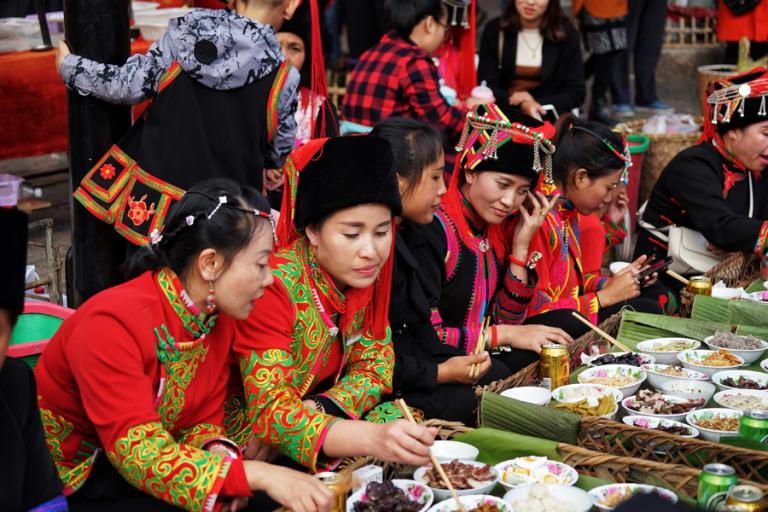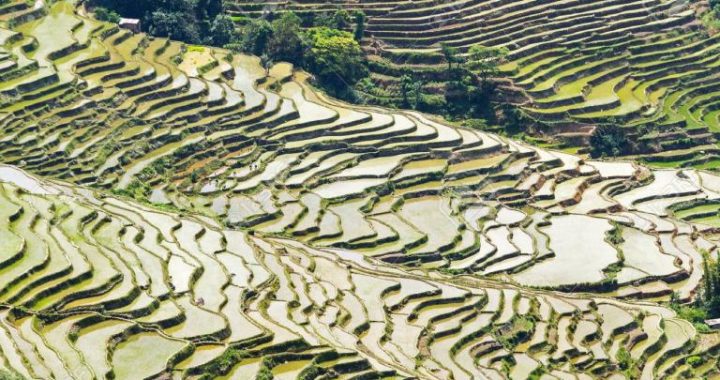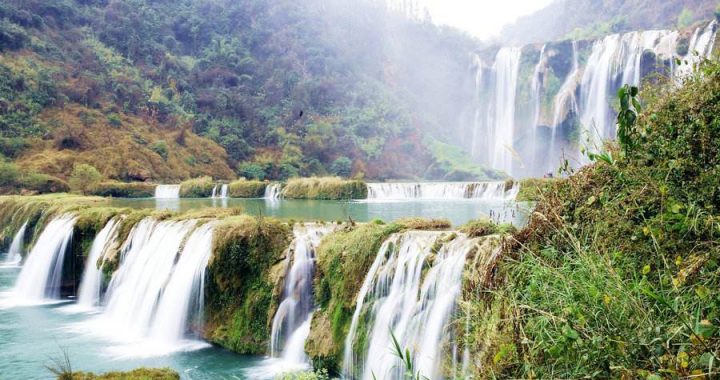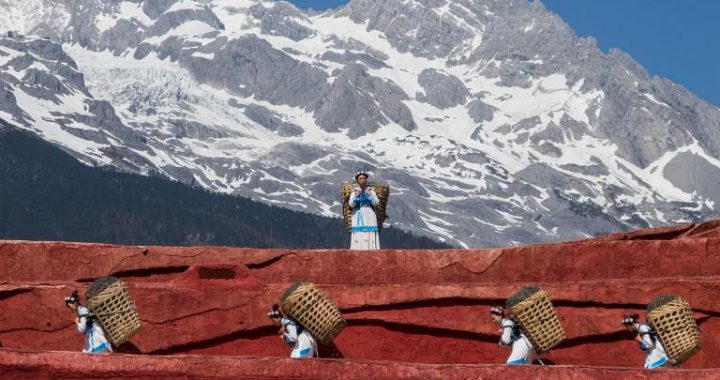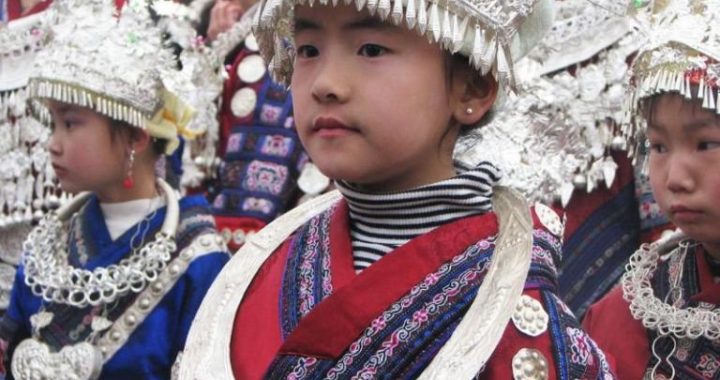The Hani people in Yunnan Province
3 min readThe Hani people live in the lower Lancang River reaches in south Yunnan, with a population of 1.43 million. Their places are high, between 800 and 2,500 meters above sea level. Most of the Hani people farm on terraced fields, which might have 100 terraces. These fields gave birth to a unique “ter-raced-field culture.”
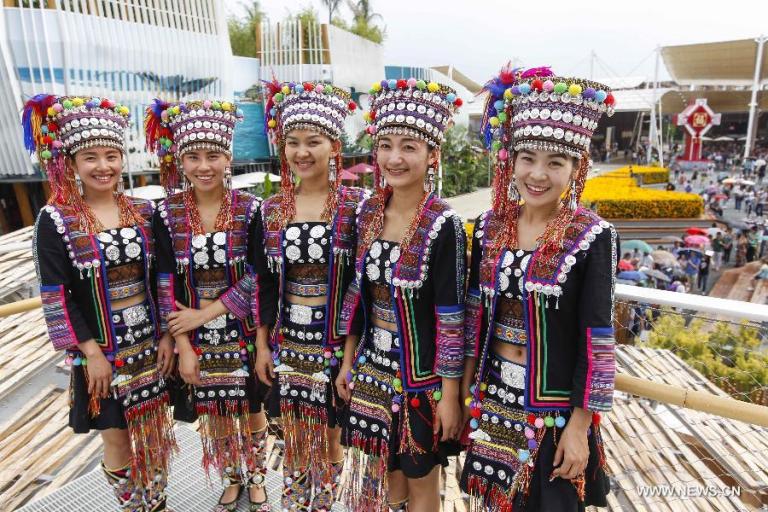
Lands in Yunnan and Guizhou Plateau are hilly. The ingenious Hani people made ditches on the slopes of a hill like silver ribbons to preserve rainwater. Even in a place 2,000 meters above sea level, growing rice is possible. The Hani people are very economical about soil, leaving not a bit unattended even the smallest crack between two rocks. Their largest fields are about an acre, the smallest justa square foot. Fields in different sizes, like high and low notes, contribute to an airy melody.
Before each field is made, rocks are cut from different areas and shipped by hand to form a dyke on a selected slope. Because of the steep slope, some dykes may be as high as a meter.
The Hani people’s terraced fields present a spectacular view,covering several counties.Just in Yuanyang,there are as many as 30,000 acres.Some slopes may have over 3,000 terraces,from 700 meters up to 1,800,crisscrossing like a cobweb,the bigger one about half an acre and smallest,table-sized.With the variation of seasons,these terraced fields present magnificent views:tender green in spring,golden in autumn when all the rice is ready for harvest,like numerous mirrors in winter against the sunshine or silk ribbons hanging from the sky.
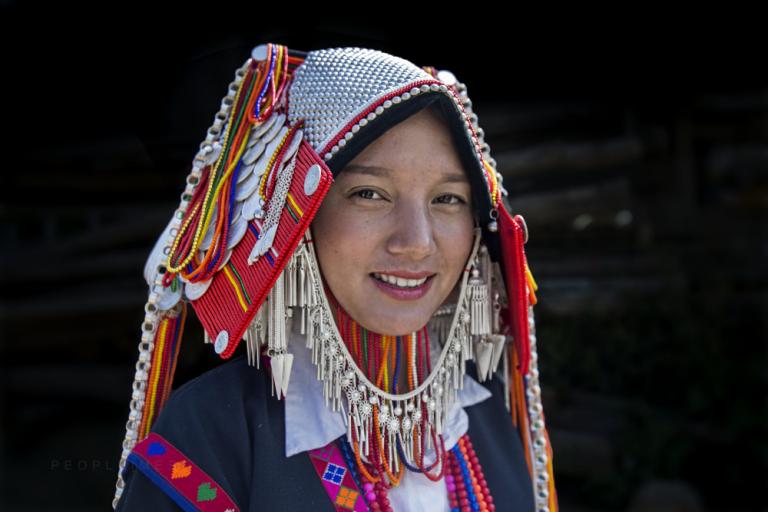
These terraced fields,together with forests,villages and water supply,make a localecologicalsystem.Their distribution of water is both unique and scientific,quantity supplied depending on the labor input from each household in the building and maintenance of a ditch.Each household has a wooden plate,marked with the quantity of water the household is allotted,which is placed at the opening from the main ditch.
Their terraced-field culture is seen in every part of local people’s life.People’s names are inspired from the fields and a ceremony is held in the fields when a baby is born.If it is a boy,a seven-or eight-year-old boy is invited over,with a small hoe,to mimic the opening up of land.If it is a girl,a seven-or-eight-year-old girl is invited over to mimic catching eels or shells in a paddy field.Only after this cere.
mony does the newly born receive a name and become a village member.The Hani people work in the fields throughout their lives and,after death,are buried on the slopes by the terraced field,to observe these lands forever.
Another unique thing about the Hani people is their “mushroom houses.”They are built around the terraced fields. People say their ancestors, after seeing mushrooms growing in wilderness, were inspired and created these houses, which have earthen walls and bamboo shelves cushioned with grass. Their roofs have four facets, looking just like a mushroom.A mushroom house may have three floors.
The first floor is to store animals and farming tools. The second floor is sectioned into three rooms with a fireplace in the middle. The third floor has an earthen roof, which is fireproof and good for more storage. In winter, it is warm and in summer, cool.
